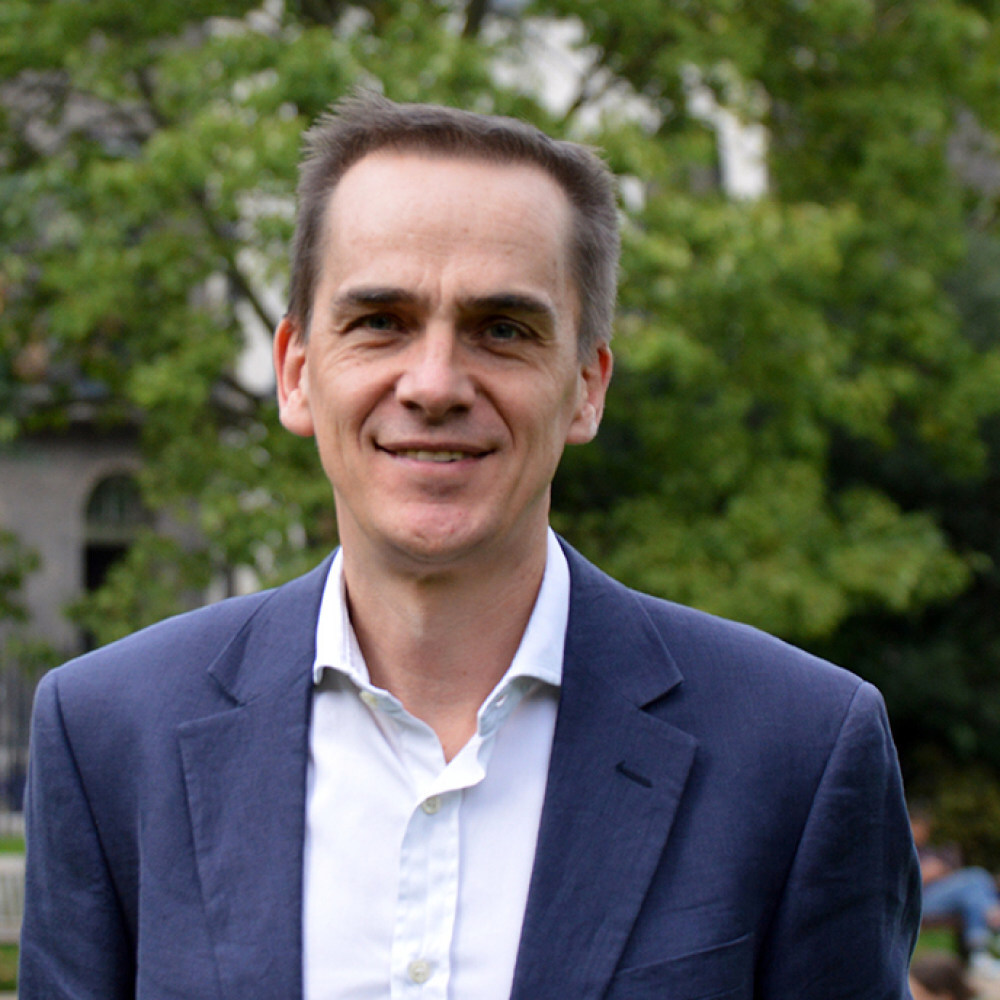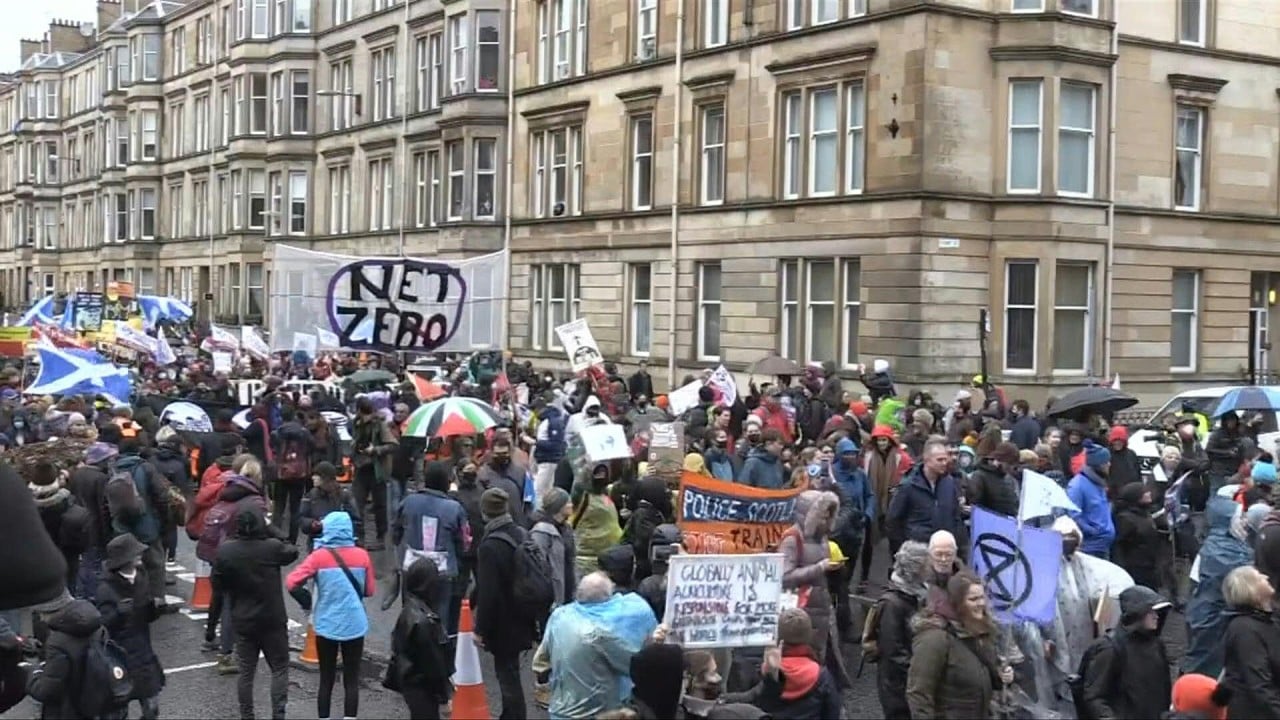
COP26 Climate Change Conference: is Saudi Arabia’s net zero pledge a breakthrough, or just a mirage?
- A kingdom built on oil, whose emissions are three times the global average, has made one of the most eye-catching pledges of the summit, matching the 2060 commitments of China and Russia
- Can it deliver? Sceptics say Riyadh’s promise relies on untested carbon capture technology and a ‘major caveat’ regarding its exports. And yet, in a land with no shortage of sunshine, there remains a ray of hope for renewables
About 42 per cent of the Gulf state’s GDP is linked to oil and gas, according to a research centre linked to the authorities (the King Abdullah Petroleum Studies and Research Centre), while petroleum accounts for more than two-thirds of its exports.
Can billionaires Ambani, Adani bring Midas touch to India’s net-zero ambitions?
If a petrostate with annual per capita carbon emissions of about 15 tonnes of CO2 per year, more than three times the global average, can transition to renewables, surely any nation can.
But whether it can in fact meet its eye-catching commitments is another matter – one that has prompted scepticism. While some progress undoubtedly has been made, experts say that hitting its target will still require a sea change for the kingdom, where some estimates foresee carbon emissions rising 45 per cent over the next 10 years.
Some analysts say Riyadh, which lags regional rivals in the switch to green energy, is relying on unproven technology and “false solutions” to close the gap, while others point out that a “major caveat” in the Saudi commitment is that it does not cover the burning of its hydrocarbons abroad.

“Per capita emissions are very high. Saudi Arabia still has a very long way to go,” said Professor Niklas Höhne, a founding partner of the NewClimate Institute for Climate Policy and Global Sustainability in Germany.
“I found it very interesting that Saudi Arabia has put a net zero target forward. I did not expect that at all.”
As well as pledging to reach net zero by 2060, Riyadh has also signed the Global Methane Pledge, which commits it to a 30 per cent cut in emissions of methane – which is over 100 times more potent as a greenhouse gas than CO2 – by 2030.
According to figures from the International Renewable Energy Agency (Irena) from 2018 – eight decades after oil was discovered in the country in significant quantities – oil makes up 53 per cent of the Saudi energy supply, and gas the remaining 47 per cent.
This country of 35 million people uses black gold in ways that analysts say other countries would no longer consider.
“They burn oil to desalinate seawater. They burn oil to generate electricity – most of the world did away with that in the 1970s. It’s a fuel they use in really low value ways,” said Jim Krane, author of Energy Kingdoms: Oil and Political Survival in the Persian Gulf.
“Saudi Arabia has got some really heavy lifting to do in its industrial and electricity sector to decarbonise.”

Saudi Arabia is comfortably among the top 10 oil consumers in the world despite being only the 41st largest in terms of population.
Despite having vast swathes of desert and abundant sunshine, solar power and other renewables currently account for a tiny fraction of energy generation.
But there are ambitious targets for ramping up the share that comes from them, and this year has seen activity increase.
In April the country opened the 300 megawatt Sakaka solar power plant and, in August, the 400MW Dumat Al Jandal wind power facility.
Sorry Boris, but without China the COP is a flop
Even so, with Saudi Arabia having a total electricity generating capacity of well over 50 gigawatt, these two plants account for not a great deal more than 1 per cent of the total nationally.
Huge further investment is needed to meet a goal outlined in January by the energy minister, Prince Abdulaziz bin Salman, of half of the country’s power coming from renewables by 2030.
The de facto ruler, Crown Prince Mohammed bin Salman, has said Saudi Arabia will invest 700 billion riyals (US$186.6 billion) this decade to combat change, and earlier this year he announced seven further solar facilities.

While Saudi Arabia is ramping up renewable capacity, much of this will be required just to cope with the significant growth in demand from the country’s young, growing population.
Some projections suggest total power demand by 2030 will be 120GW, although recent reports highlight demand stagnation and this much may not be needed.
What does seem likely, though, is that over the coming decade, even as investments in renewables increase, Saudi Arabia’s domestic carbon emissions will actually continue to grow because total energy consumption is rising.
One estimate suggests that in 2030 they will be between 29 per cent and 45 per cent higher than they were in 2019.
As Saudi Arabia gets off the starting blocks with renewables, its smaller neighbour the United Arab Emirates has been building solar plants for a decade and has several times Saudi Arabia’s installed capacity.

“[With] the Saudis, there’s still a little bit of a discrepancy between what they say publicly and what they say behind closed doors,” he said.
“Maybe they’re where the UAE was five to 10 years ago in terms of commitments and governance.”
It is relying on carbon capture and storage (CCS), the idea being that this will mean the country can continue to burn fossil fuels while meeting its 2060 pledge.
There is much scepticism among environmentalists about this approach.
In a statement released after Saudi Arabia made the net zero commitment, Greenpeace Middle East and North Africa’s campaigns manager, Ahmad El Droubi, described CCS as one of “an array of false solutions” the kingdom was relying on.
COP26: is carbon pricing the climate change silver bullet?
“[Its] viability at scale remains largely unproven and its potential to deliver significant emission reductions by the mid-century is currently limited,” he said.
“Safe, permanent, and verifiable storage of CO2 is difficult to guarantee and there are many hidden climate impacts of such technologies.”
Mason said the fact that a commitment had been made to reach net zero, even if this would happen a decade or two after the favoured date of 2050, was something that could be built upon as technology improved.
“It’s good to get that commitment because, over time, as these technologies become cheaper … more countries will come into a more ambitious arena of commitments. There’s no reason the Saudis cannot come into that,” he said.
Additional technologies the Saudis have said they will be using to reach the 2060 commitment are direct air capture, hydrogen and low-carbon fuels.
As well as Saudi Arabia pledging to achieve net zero by 2060, the country’s oil producer, Saudi Aramco, has said it will reach net zero for its own operations a decade earlier.
‘A MAJOR CAVEAT’
However, the country’s and Saudi Aramco’s net zero commitments both come with a major caveat.
Saudi Arabia’s 2060 commitment excludes the fossil fuel emissions generated by the burning of Saudi hydrocarbon exports, while the Saudi Aramco mid-century net zero promise excludes emissions from the burning of the company’s oil.
“Saudi Arabia is a very big player in the changing climate … Aramco is linked to more emissions than any other single company on the planet.”
Far from winding down oil exports, the Saudis are planning to increase them from about 12 million barrels per day currently to 13 million by 2027.
The kingdom has the second-largest proven petroleum reserves in the world, at about 17 per cent of the global total, and has no plans to leave them underground.
As Saudi Arabia put it when announcing its 2060 target, net zero at home “will be delivered in a manner that preserves the kingdom’s leading role in enhancing the security and stability of global energy markets”.
Indeed, the Saudis have made clear that their plans to reduce their own net emissions are dependent on the continuation of oil exports.
Höhne said the net zero pledge would have been a breakthrough if it had included these oil exports, and if the country had chosen to confront the “huge challenge” of fully shifting its economy away from its dependence on fossil fuels.
“What’s necessary is for Saudi Arabia and all oil exporters to think about the phase after fossil fuels,” he said.
For the moment, however, it appears that the kingdom is not ready to do this.


